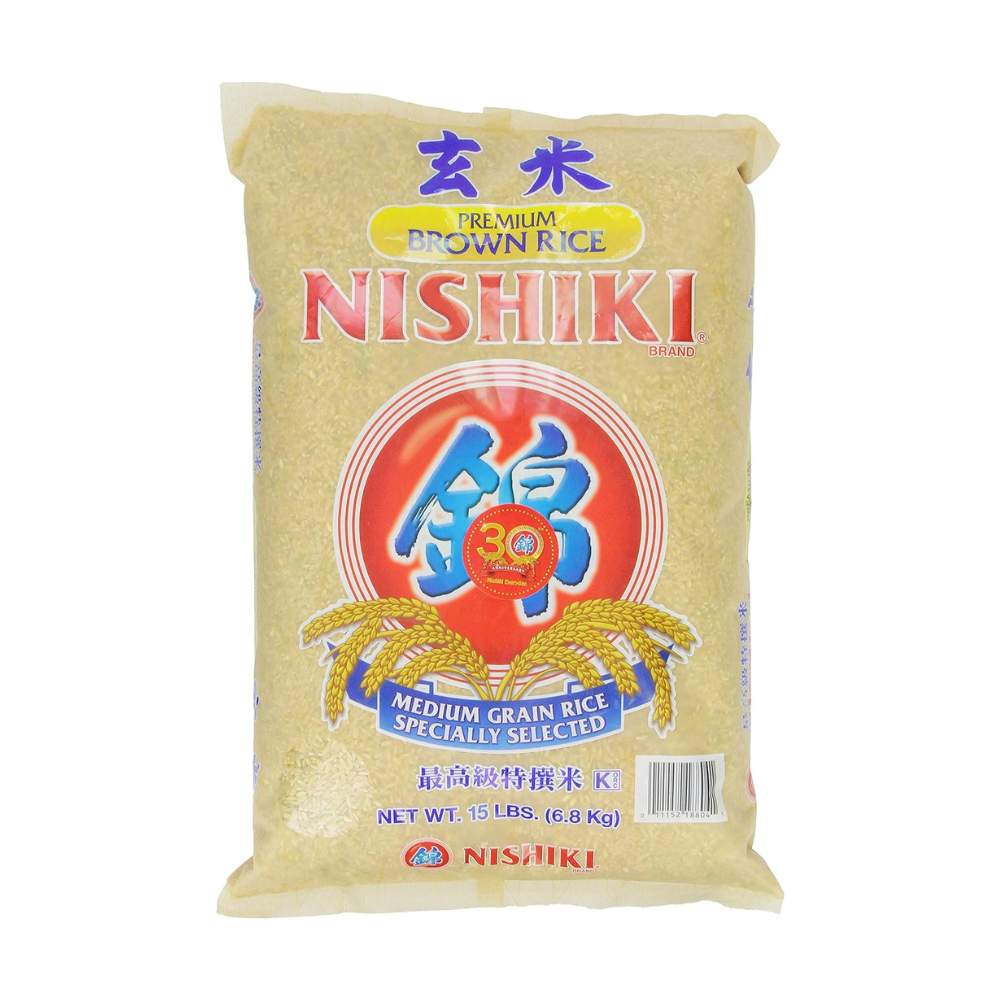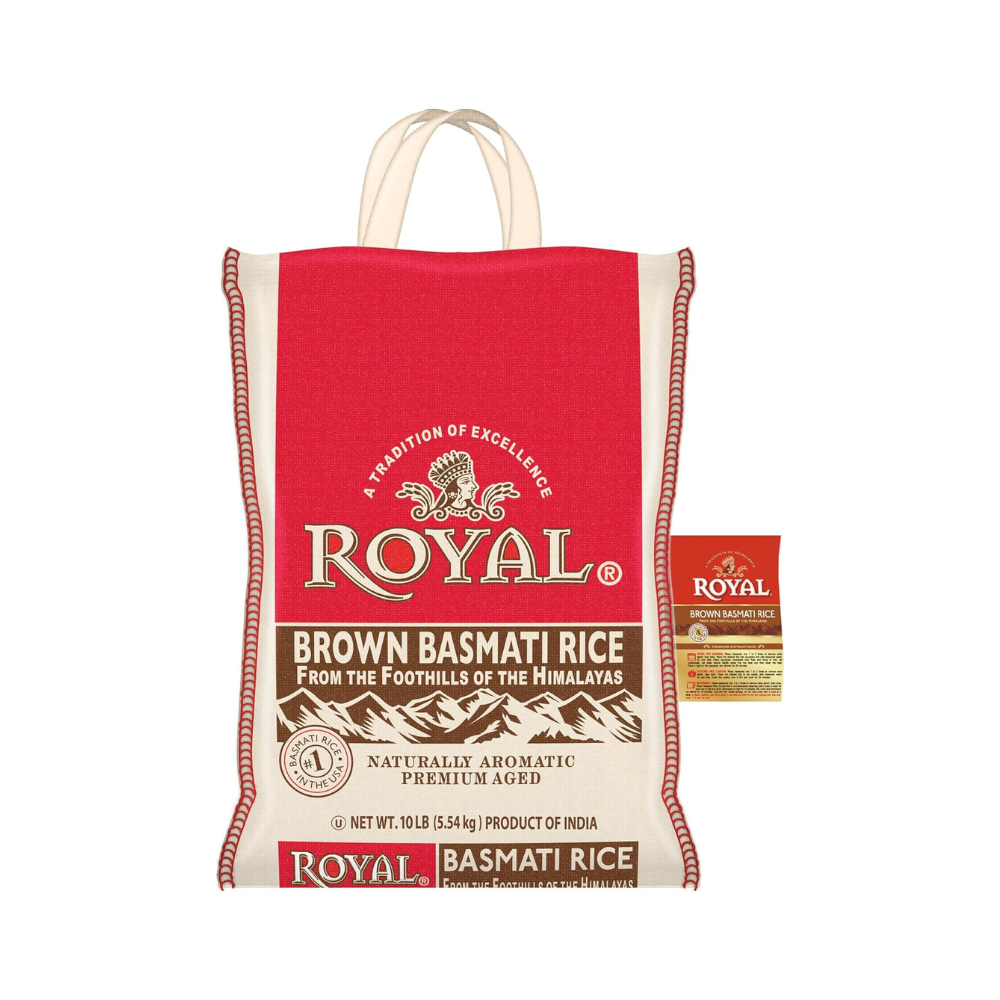Unveiling The Grain: A Deep-Dive Into Brown Rice

Are you in search of a wholesome alternative to white rice that is not only nutritious but also versatile and delicious?
Look no further! Brown rice is the unsung hero you've been looking for. Not all brown rice is created equal, and we'll dive into what makes it stand out from traditional white rice.
Learn about the top contenders in the realm of brown rice and how to choose the best option for your needs. Plus, discover creative ways to incorporate this hearty grain into your cooking routine.
Don't miss out on reaping all the benefits brown rice has to offer. Join us as we take a deep dive into this nutritional jewel and elevate your meals with its wholesome goodness.

How We Choose The Best Foods
Navigating the sea of the food industry can feel overwhelming. With thousands of options and flashy marketing, how do you know which food brands are worth your investment and which are just cashing in on the latest health trends?
At Kiki, we've felt this frustration too. That's why we went beyond the usual review and testing methods.
With Kiki, you get more than just recommendations; you get a trusted friend looking out for your well-being. Our tested and energetically approved products ensure that you're choosing the best foods for your budget and your health needs.

Long Grain Brown Rice From Augason Farms
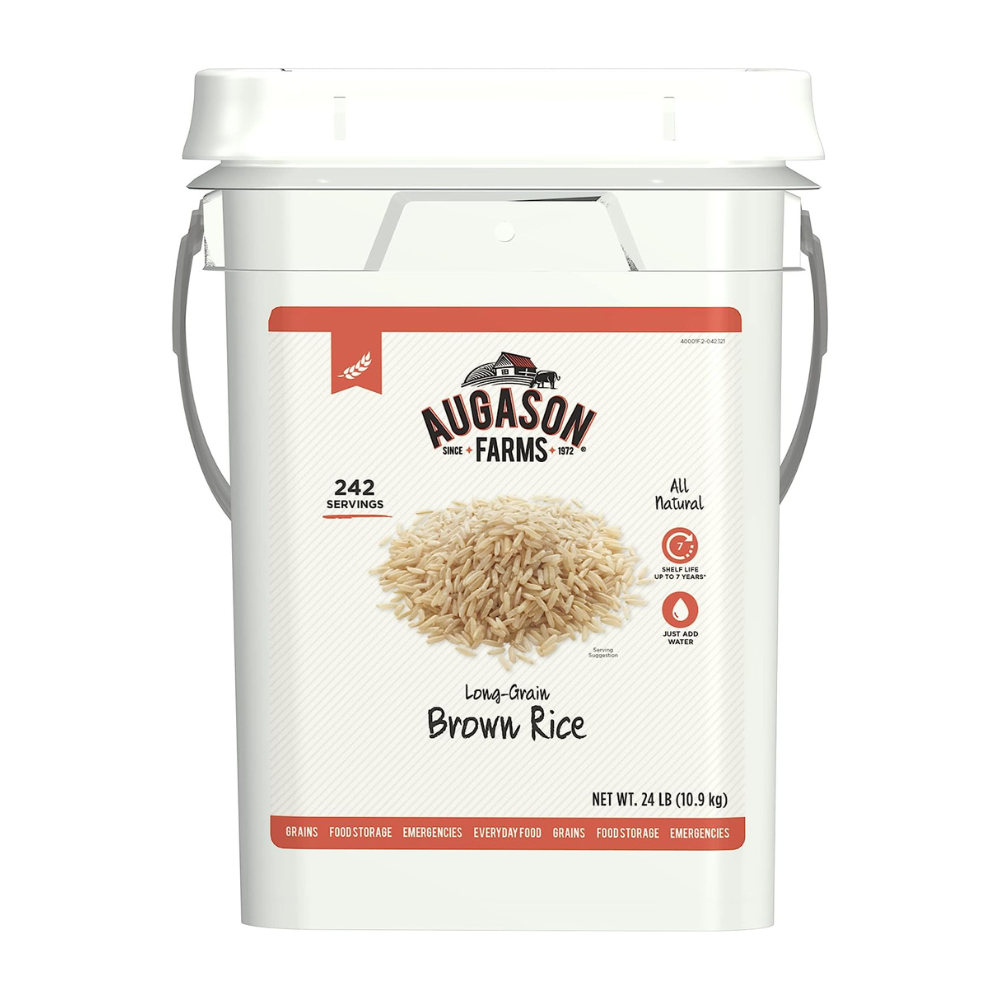
#1 Best Brown Rice
Long Grain Brown Rice From Augason Farms
Energy Test Levels: 9.8/10
Why Do We Promote It
For more than five decades, the heart of Augason Farms has been dedicated to pioneering the path for nutritional security, ensuring that families across the globe have access to premium-quality meals regardless of circumstance.
Nestled within their comprehensive range lies a veritable bounty, from hearty ready-to-prepare dishes and succulent fruits and vegetables to robust meats and creamy dairy products, all preserved at the zenith of freshness using state-of-the-art freeze-drying techniques.
This meticulous process locks in both the peak nutritional value and the exquisite flavors, establishing Augason Farms as a trusted guardian of taste.

What's Good About It
Introducing the latest essential to your pantry and long-term food storage solution: Long Grain Brown Rice from Augason Farms. This perfect brown rice is not only a versatile staple but a nutritious option for those seeking a healthier alternative to white rice.
With its bran and germ layers intact, each grain retains a bounty of nutrients often stripped from its white counterpart.
The Long Grain Brown Rice from Augason Farms stands out for its exceptional quality and adaptability in a multitude of dishes. Whether you're crafting a hearty casserole, a refreshing salad, or a vibrant stir-fry, this fluffy brown rice guarantees to keep its delightful fluffy texture, elevating your meals with a wholesome touch.
Beyond its culinary versatility, this fluffy brown rice boasts a prolonged shelf life, making it an invaluable addition to your emergency food storage supply. The careful packaging ensures that the natural goodness of the rice is preserved, ready to nourish you and your family whenever needed.

Premium Brown Rice From Nishiki
Why Do We Promote It
Nishiki, a titan in the domain of wholesale supply, stands out not merely for its competitive pricing but also for its distinctive approach to product distribution tailored specifically for restaurants.
By ingeniously subdividing their products into personal packages, Nishiki ensures not only the ease of cooking but also the enigmatic preservation of quality and freshness that often surpasses what one might find in ordinary supermarket aisles.
Within the meticulously controlled environments of their storage rooms, every product is guarded against the merest hint of quality degradation, resembling a treasury where the jewels of Japanese culinary tradition are safeguarded.
Thus, Nishiki triumphs in delivering fresh, high-quality, and affordable Japanese products, making it an indispensable ally for any restaurant dedicated to offering authentic and flavorful dishes.
What's Good About It
Crafted for those who prioritize health without compromising on flavor, Nishiki’s Premium Brown Rice is more than just an ordinary grain; it is a lifestyle choice. Loaded with essential nutrients, each grain promises a bounty of benefits, making it an ideal swap for conventional white rice.
Rich in Nutrition: Every serving of Nishiki's mushy Rice is packed with vitamins and minerals essential for maintaining a balanced diet. It's a nourishing source of fiber, promoting better digestion, and an enduring feeling of fullness, helping to manage weight effectively.
Elevated Fiber Content: The high fiber content not only aids in digestion but also plays a pivotal role in regulating blood sugar levels. It’s a smart carbohydrate choice that integrates seamlessly into any diet plan, supporting overall health and well-being.
Versatile Culinary Companion: Whether you're crafting a traditional brown rice sushi, stirring up a comforting risotto, or simply pairing it with a medley of vegetables for a fulfilling meal, Nishiki's Premium Brown Rice adapts to your culinary needs.
Ideal for Healthy Eating: For individuals and families steering towards a healthier eating path, Nishiki’s Premium Brown Rice is a beacon of hope. It complements various dietary needs, from gluten-free to whole-food diets, without sacrificing taste or satisfaction.
Brown Basmati Rice From Kusha
Why Do We Promote It
Nestled within the bustling heart of the industry, Kusha emerges as a beacon of innovation in the wholesale distribution of groceries and related products. With a steadfast commitment to quality and excellence, this pioneering company has carved out a distinct niche for itself.
The array of products meticulously selected and distributed by Kusha reflects a deep understanding of consumer demands, setting a standard that competitors strive to match.
It's not just about distributing products; it's about curating an experience that resonates with families and individuals who value both quality and convenience.
In a marketplace teeming with options, Kusha stands out, demonstrating a relentless pursuit of excellence and a profound commitment to enhancing the consumer experience at every turn.
What's Good About It
Introducing Brown Basmati Rice from Kusha, the epitome of health and flavor blended into each grain.
This premium quality whole grain rice, with its germ and bran layer perfectly intact, promises not just a nutritious meal but an aromatic adventure that is sure to delight your senses and elevate your dining experience.
Grown in the fertile regions renowned for producing the world's finest rice, Kusha's Brown Basmati Rice is aged to perfection.
This aging process enhances its naturally aromatic qualities, ensuring that each dish prepared with this rice is not only flavorful but filled with an enticing aroma that brings to mind the lush fields of its origin.
The rice cooks up to be fluffy and delicate, making it an ideal choice for a variety of dishes. From the rich layers of a traditional biryani to the simple yet fulfilling pulav, or even a quick stir-fry, Brown Basmati Rice from Kusha offers a versatile base that complements a wide range of cuisines and cooking styles.
For health-conscious individuals and those leading a mindful lifestyle, Kusha's Brown Basmati Rice is a blessing. Being naturally gluten-free and vegan, it aligns perfectly with various dietary preferences and restrictions, ensuring that everyone can enjoy its delightful taste and wholesome goodness.
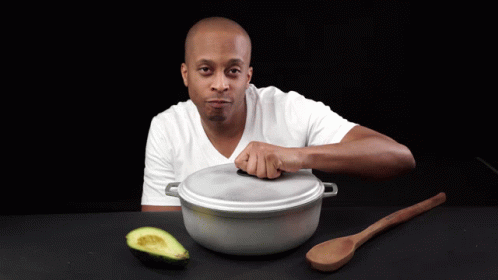
Brown Rice FAQs
Finding accurate and comprehensive information about brown rice can often lead to confusion. With so many conflicting sources, how do you know what to believe?
Kiki is here to cut through the confusion with our comprehensive guide to the most frequently asked questions about brown rice. We've done the research and compiled all the answers you've been searching for into one easy-to-navigate resource.
From its health advantages to cooking tips, Kiki provides you with the knowledge to confidently integrate brown rice into your meals. Say goodbye to uncertainty and hello to a healthier, well-informed lifestyle with Kiki's expert insights.
Which Brown Rice Is The Healthiest?
There are many types of brown rice available, but the healthiest one would depend on your specific dietary needs and preferences. Generally speaking, brown rice is healthier than white rice as it contains more fiber, vitamins, and minerals.
Some popular types of brown rice that are considered to be healthy include:
1) Basmati Brown Rice: This variety is known for its long grains and nutty flavor. It is a good source of protein, iron, and B vitamins.
2) Jasmine Brown Rice: Similar to basmati brown rice, this type also has longer grains and a nutty taste. It is high in fiber and antioxidants.
3) Black Rice: Also known as Forbidden Rice, this type of brown rice has a dark color due to the presence of anthocyanins (a type of antioxidant). It is rich in fiber and has a low glycemic index.
4) Red Rice: This variety gets its distinctive red color from anthocyanins as well. It has a slightly nuttier taste compared to other types of brown rice.
5) Wild Rice: Although technically not a variety of brown rice (it comes from different plants), wild rice can also be considered healthy due to its high nutrient content. It contains more protein than other types of rice and is rich in B vitamins, magnesium, zinc, and potassium.
Ultimately, the healthiest choice for you would depend on your nutritional requirements. You can try different varieties or consult with a nutritionist or dietitian for personalized recommendations based on your needs.
How Do You Pick The Best Brown Rice?
- Look for the label "100% whole grain": When picking brown rice, make sure to check the label and look for the words "100% whole grain" or "whole grain". This means that the rice has not been stripped of its nutrients and is a healthier option.
- Choose organic: Organic brown rice is grown without the use of harmful chemicals and pesticides, making it a safer and more nutritious choice.
- Check for freshness: Brown rice has a shorter shelf life compared to white rice due to its higher oil content. Make sure to check the expiration date on the package before purchasing.
- Consider different varieties: Brown rice comes in different varieties such as long-grain, short-grain, basmati, jasmine, etc. Each variety has its unique flavor and slightly chewy texture so experiment with different types to find your favorite.
- Opt for local or domestic brands: Buying locally produced brown rice ensures that you are getting fresh produce while also supporting local farmers.
- Read reviews: Look online or ask friends and family for recommendations on which brands or types of brown rice they prefer based on taste, texture, and overall quality.
- Buy from reputable sources: If possible, buy from trusted sources such as health food stores or reputable online retailers that specialize in natural or organic products.
- Store properly: To maintain freshness and prevent it from going rancid, store your brown rice in an airtight container in a cool dry place away from sunlight.
- Try different cooking methods: Experimenting with different cooking methods like soaking overnight before cooking can help improve the texture and taste of your cooked rice.
Can I Eat Brown Rice Every Day?
Yes, you can eat brown rice every day. Incorporating brown rice into your daily diet can provide numerous health benefits. Brown rice is a whole grain that is rich in fiber, vitamins, and minerals such as magnesium and selenium.
It also contains antioxidants and has a lower glycemic index compared to white rice, making it a healthier option for managing blood sugar levels.
Eating brown rice every day can help with weight management as it is more filling due to its high fiber content. This can help reduce cravings for unhealthy snacks between meals. The fiber in brown rice also promotes healthy digestion and regular bowel movements.
Furthermore, studies have shown that regularly consuming whole grains like brown rice may lower the risk of heart disease and certain types of cancer.
That being said, moderation is key when it comes to any food item. While there are many benefits to eating brown rice daily, it's important to vary your diet and include other nutritious foods as well.
If you are unsure about incorporating brown rice into your daily meals or have any dietary restrictions or allergies, consult with a healthcare professional before making significant changes to your diet.
Should I Rinse Brown Rice Before Cooking?
It is generally recommended to rinse brown rice before cooking it. Rinsing removes any debris or dust that may be present on the grains. It also helps remove excess starch, resulting in fluffier and less sticky rice.
Additionally, many brown rice varieties contain a natural compound called phytic acid, which can inhibit the absorption of certain nutrients like iron and zinc. Rinsing the rice can help reduce the amount of phytic acid and make these nutrients more available for our bodies to absorb.
To rinse brown rice, place it in a fine-mesh strainer and run excess water over it while gently stirring with your fingers. You can continue rinsing until the cold water runs clear.
Some people also recommend soaking brown rice for 30 minutes to an hour before rinsing and cooking it. This can further reduce levels of phytic acid and improve digestibility.
In summary, while it is not necessary to rinse brown rice for food safety reasons like with other grains (such as quinoa), doing so can help improve its texture and increase nutrient absorption. So go ahead and give your brown rice a good rinse before cooking!
What Kind Of Brown Rice Is Good For Diabetes?
Brown rice is a great choice for people with diabetes because it is a whole grain that is high in fiber and nutrients, and has a lower glycemic index compared to white rice.
There are various types of brown rice available, but some may be better for managing blood sugar levels than others. Here are some key considerations when choosing the best type of brown rice for diabetes:
- Choose whole grain: Make sure to look for varieties that are labeled as "whole grain" or "whole wheat" on the packaging. This means that the entire grain kernel, including the bran and germ, has been left intact during processing, which retains more nutrients and fiber.
- Consider the glycemic index (GI): The GI is a measure of how quickly a food raises blood sugar levels. Generally, foods with lower GI scores (55 or less) are better for people with diabetes as they cause slower and smaller increases in blood sugar levels. The GI can vary depending on the type of brown rice - long-grain brown rice tends to have a lower GI than short-grain varieties.
- Look at fiber content: Fiber helps slow down digestion and absorption of carbohydrates, which can help control blood sugar levels. Aim for at least 3 grams of fiber per serving when choosing brown rice.
- Avoid flavored or processed options: Flavored or processed brown rice such as those mixed with soy sauce or seasonings may contain added sugars or unhealthy fats that can negatively impact blood sugar control.
Some good options for diabetics include basmati brown rice, long-grain brown rice, organic wild blend sprouted red savannahs’ Kharka Himalayan red beans & quinoa medley by Lundberg Family Farms, Bhutanese Red Rice from Lotus Foods, and black japonica medium-grain heirloom variety from Lundberg Family Farms.
It's always best to check with your doctor or registered dietitian before making significant changes to your diet, especially if you have diabetes. They can help recommend the best type and portion size of brown rice for your specific needs.
Which Brown Rice Is Best For Weight Loss?
There is no specific type of brown rice that is best for weight loss. However, there are a few factors to consider when choosing the type of brown rice to incorporate into your weight loss diet.
- Whole grain vs. processed: Whole grain brown rice contains all parts of the grain, including the bran and germ, which provide important nutrients and fiber. Processed or refined brown rice has had these nutritious parts removed, making it less beneficial for weight loss. Therefore, opt for whole-grain varieties such as long-grain or basmati brown rice.
- Low glycemic index: Brown rice has a lower glycemic index compared to white rice, meaning it does not cause a rapid spike in blood sugar levels after consumption. This can help prevent cravings and promote satiety, making it easier to stick to your calorie goals.
- Organic vs conventionally grown: Choosing organic brown rice may be beneficial for weight loss as it does not contain any pesticides or chemicals that could potentially disrupt hormones involved in metabolism.
- Portion control: While incorporating brown rice into your diet can be helpful for weight loss due to its high fiber content and low-calorie density, portion control is still key. Stick to recommended serving sizes (about ½ cup) and fill up on non-starchy vegetables and lean protein sources alongside your serving of brown rice.
Ultimately, the best type of brown rice for weight loss will depend on personal preference and dietary needs.
How Much Brown Rice Should I Eat A Day?
The recommended serving size of brown rice is 1/2 cup, and the daily recommendation for grains is 6 servings for adult men (9 oz) and 5 servings for adult women (7 oz). This means that men should aim to consume about 3 cups (18 oz) of brown rice per day, while women should aim for approximately 2.5 cups (15 oz) per day.
However, this recommendation may vary depending on individual needs and preferences, so it's important to consult with a nutritionist or healthcare professional for personalized dietary recommendations.
Additionally, it's important to balance your intake of brown rice with other nutritious foods as part of a well-rounded diet.
How Long Does It Take To Cook Brown Rice?
It typically takes about 45 minutes to cook brown rice on the stovetop. However, this can vary slightly depending on the type of brown rice and the cooking method used.
Some types of brown rice, such as basmati or jasmine, may cook faster due to their different textures.
Additionally, using a high-pressure cooker or rice cooker can significantly reduce the cooking time for brown rice to around 20-30 minutes. It's important to also follow specific instructions for the type of brown rice being cooked and adjust cooking time accordingly.
How Long To Soak Brown Rice Before Cooking?
Brown rice should be soaked for at least 30 minutes before cooking. Soaking helps to remove phytic acid, which can make the rice harder to digest and reduce its nutritional value.
However, if you have the time and prefer a softer texture, you can soak it for up to 8 hours or overnight.
Just make sure to rinse it well before cooking. Some people even recommend soaking brown rice in warm water with a splash of apple cider vinegar or lemon juice for extra benefits.
Is Brown Rice Okay For Diabetics?
Yes, brown rice is generally considered a healthier option for diabetics compared to white rice. Brown rice contains more fiber and nutrients, which can help regulate blood sugar levels and improve insulin sensitivity.
It also has a lower glycemic index, meaning it causes a slower rise in blood sugar after consumption. However, portion control is still important as with any carbohydrate-containing food for diabetics. It's always best to consult with your healthcare team for personalized dietary recommendations.
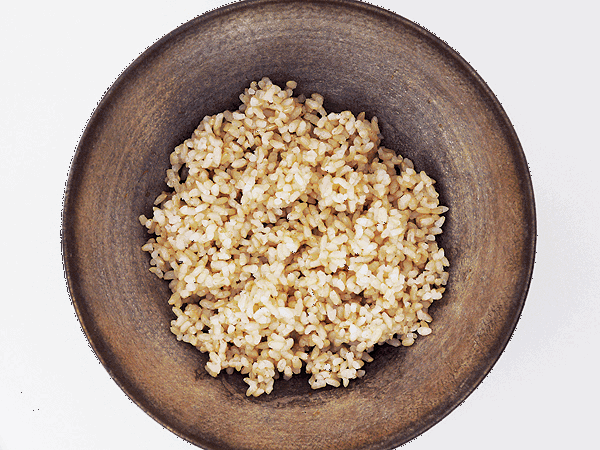
Best Brown Rice For You
In conclusion, after extensive research and testing, we can confidently recommend the best quality brown rice on the market. Kiki's time and efforts have allowed us to narrow down our options and select only the best brands that meet our high standards of quality.
It is important to remember that not all brown rice is created equal - some may be higher in nutritional value, while others may offer a better taste or add texture. It ultimately depends on your personal preferences and dietary needs.
Remember, investing in quality food for yourself is an investment in your overall health. Don't settle for less when it comes to providing nourishment for your body. Choose the best brown rice option that fits your needs and enjoy all of its amazing benefits. Happy cooking!
Ricefully,
Kiki And His Team



